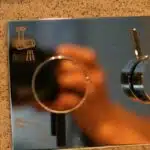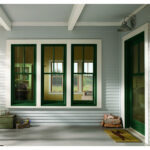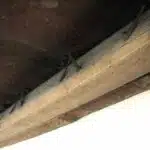As gate repair specialists, we understand the importance of maintaining the functionality of your property’s entrance. A sagging gate not only detracts from the aesthetics of your home or business but also poses a security risk if left unresolved. It is crucial to address this issue promptly and effectively.
In this article, we will provide you with valuable insights on how to fix a sagging gate. We will cover various methods that you can use to restore the stability and strength of your gate, whether it is a wooden or metal gate. By following our step-by-step guide, you will be able to diagnose the underlying problem causing your gate to sag and implement the necessary repairs to restore it to its former glory.
Signs Of A Sagging Gate
Imagine coming home after a long day at work, only to find your gate sagging and unable to latch properly. This can be a frustrating and even dangerous situation, as it compromises the security of your property. As a gate repair specialist, I have seen many cases like this, where homeowners neglect the signs of a sagging gate until it’s too late.
One common sign of a sagging gate is misalignment. If your gate is not hanging straight or doesn’t close evenly, it could be due to an alignment issue. This often occurs when the hinges are loose or bent, causing the gate to lean to one side. Another sign is uneven weight distribution. Gates that are too heavy on one side can cause strain on the hinges and lead to sagging over time.
It’s important to address these signs as soon as possible before they worsen and become more expensive to fix. Neglecting them could result in further damage to your gate or even injury if the gate collapses unexpectedly. In the following sections, we will discuss different types of gates and their unique challenges when it comes to fixing a sagging issue.
Types Of Gates
Different gate materials and design options can greatly impact the durability and longevity of your gate. When choosing a material for your gate, it is important to consider the climate in which you live. For example, wood gates may not be the best option in areas with high humidity or frequent rain, as they are prone to warping and rotting over time. Aluminum gates are a popular choice due to their lightweight construction and resistance to rusting, making them ideal for coastal regions.
Gate design options should also be taken into consideration when choosing a gate for your property. A single swinging gate may work well for smaller driveways or pedestrian entrances, while double gates provide a larger opening for vehicles and heavier traffic. Sliding gates are another option that can save space and provide added security, but they require more maintenance than other types of gates due to their intricate mechanics.
When deciding on the type of gate to install, it is important to weigh the pros and cons of each material and design option. Consider factors such as climate, level of use, and desired level of security before making your decision. With proper care and maintenance, any type of gate can provide years of reliable service.
As a gate repair specialist, I have seen firsthand the damage that can occur when gates are not properly maintained or repaired. In order to keep your gate functioning properly, it is essential that you have the right tools on hand. From basic hand tools like hammers and screwdrivers to specialized equipment such as welding machines and electric drills, having the right tools will make all the difference when it comes to repairing or maintaining your gate.
Next up: Tools Needed for Gate Repair…
Tools Needed For Gate Repair
Imagine a house with a gate that serves as the entrance. Just like how the human body has a heart, this gate stands as the foundation of the house’s security. It is essential to keep it in good working condition to ensure that it will function correctly and provide safety for the homeowners. To repair a sagging gate, you must have an understanding of its anatomy. Moreover, having enough tools for gate repair techniques is crucial to ensure that everything is done correctly.
The most common gate problems are due to wear and tear. This can lead to rusting, broken hinges, or loose screws. When this happens, it can cause your gate to sag or not close properly. As a result, this may compromise the safety and security of your home. With proper tools such as pliers, wrenches, and screwdrivers, you can fix these issues easily.
Having knowledge of basic gate repair techniques coupled with proper tools will help you save time and money in solving common gate problems. A sagging gate may seem like a small issue but leaving it unresolved may lead to more significant problems in the future. Regular maintenance checks on your gates are necessary to ensure that they function optimally. In the next section, we will discuss safety precautions before proceeding with any repairs or replacements needed for your gates’.
Safety Precautions
When repairing a sagging gate, it is important to wear protective gloves to protect hands from splinters, sharp edges, and other potential hazards.
Safety goggles, ear protection, and other protective gear should also be worn when repairing a sagging gate to protect against flying debris and loud noises.
Additionally, appropriate clothing should be worn to protect against cuts and scrapes, such as long pants and closed-toe shoes.
It is also important to ensure that other safety measures are taken, such as having access to a first-aid kit and ensuring that any tools and equipment used are in good working order.
Wearing Gloves
As gate repair specialists, safety measures should always be a top priority. Among the many precautions to take, using gloves is crucial in preventing injuries and accidents. When working on a sagging gate, it is essential to wear gloves made of durable materials such as leather or rubber. These materials provide adequate protection against sharp edges, splinters, and other hazards that may cause injury.
Using gloves not only protects your hands but also provides better grip and control when handling heavy tools or equipment. This ensures that you can work efficiently without compromising your safety while completing the task at hand. Moreover, wearing gloves minimizes the risk of contamination from harmful substances such as chemicals or rust that may be present on the gate’s surface.
Before starting any repair work, ensure that you have the appropriate gloves for the job at hand. Gloves should fit snugly and cover your entire hand up to your wrist to provide maximum protection against potential hazards. Remember to inspect them regularly for signs of wear and tear and replace them if necessary. By following these simple guidelines, you can ensure that you are taking all necessary precautions to protect yourself while fixing a sagging gate.
As a gate repair specialist, it is our responsibility to prioritize safety measures when working on a project. Using gloves is one of the most critical precautions we can take to prevent injuries and accidents while repairing a sagging gate. Not only do they offer protection against hazards such as sharp edges and splinters, but they also provide better grip and control when handling tools or equipment. So let us put on our gloves before we begin any repair work – it’s an easy step that could make all the difference between a successful job completion or an unfortunate accident!
Using Protective Gear
As gate repair specialists, safety should always be our top priority. In addition to wearing gloves, using protective gear such as safety glasses and hard hats is also crucial in preventing accidents and injuries while repairing a sagging gate. These items provide additional protection against flying debris, falling objects, and other hazards that may cause harm.
When repairing a sagging gate, it is essential to wear appropriate protective clothing such as long-sleeved shirts and pants made of thick materials. This will protect your skin from cuts, scratches, and other injuries that may occur during the repair process. Additionally, wearing sturdy work boots with non-slip soles can prevent slips and falls while working on uneven surfaces.
In conclusion, wearing gear and protective clothing is vital when repairing a sagging gate. As professionals in the field of gate repair, it is our responsibility to ensure that we are taking all necessary precautions to prevent accidents and injuries while on the job. By following these safety measures, we can complete the task at hand efficiently without compromising our well-being or that of others around us.
Step 1: Inspect The Hinges
To ensure a safe and successful gate repair, it is essential to take the necessary safety precautions. Before attempting any repairs, make sure to wear protective gear, such as gloves and eye goggles. Additionally, ensure that all equipment and tools are in good condition before use.
After taking safety precautions, the first step in fixing a sagging gate is to inspect the hinges. Hinge maintenance is crucial for keeping your gate functioning correctly. Common hinge problems include rust buildup, worn-out bearings or bushings, and loose screws or bolts.
When inspecting the hinges, check for signs of damage or wear. If there is visible rust or corrosion on the hinge surface, clean it off with a wire brush and apply lubricant to prevent further corrosion. Additionally, tighten any loose screws or bolts holding the hinge in place. By addressing these common hinge problems first, you can often fix a sagging gate without needing to replace any parts.
Transition into the subsequent section: Tightening loose screws is another critical step in fixing a sagging gate. By tightening any loose screws on the hinges or other parts of the gate frame, you can often restore its proper function and prevent future issues from occurring.
Step 2: Tighten Loose Screws
Like a loose tooth, a sagging gate is not only unsightly but also poses a risk of falling off. That’s why tightening loose screws is one of the easiest methods to restore the stability of your gate. Tightening screws can seem like an easy task, but it requires a trained eye and careful consideration to avoid causing further damage.
Common screws used in gates are usually made of stainless steel or galvanized metal. However, over time, screws become loose due to constant use or exposure to weather elements. Here are simple steps to tighten loose screws:
- Use a screwdriver that fits correctly in the screw head.
- Turn the screw clockwise until resistance is felt.
- Avoid over-tightening as this might cause more damage.
Alternative methods include using wood glue and toothpicks to fill up stripped holes before replacing screws. Alternatively, you can use longer screws or larger diameter screws for better grip.
As a professional gate repair specialist, I recommend regular maintenance checks every six months to avoid expensive repairs. The danger with leaving sagging gates unattended is that they often result in damages beyond repair. Therefore, tightening loose screws should be done promptly when detected during routine inspections.
The next step involves replacing damaged hinges – these are crucial components that hold your gate in place and ensure smooth opening and closing movements without scraping against the frame or post.
Step 3: Replace Damaged Hinges
To fix a sagging gate, one of the most important steps is to replace damaged hinges. Gate hinge selection is crucial in ensuring that the gate operates smoothly and securely. When choosing a hinge, it is important to consider the weight and size of the gate, as well as any environmental factors such as exposure to moisture or extreme temperatures.
When selecting hinges for a gate repair project, it is recommended to choose heavy-duty hinges that are capable of supporting the weight of the gate. Hinges made from materials such as stainless steel or galvanized steel are ideal for outdoor use as they are resistant to rust and corrosion. Additionally, self-closing hinges can be useful in preventing gates from slamming shut and causing damage.
Proper hinge installation is also essential in ensuring that the gate functions properly. One tip for installing hinges is to ensure that they are level and plumb before attaching them to the gate frame. This can be done by using a level tool and shims if necessary. It is also important to use screws that are long enough to securely fasten the hinges onto both the gate frame and post.
With proper gate hinge selection and installation, a sagging gate can be repaired effectively. The next step in reinforcing the gate involves addressing any issues with its structure or support system without compromising its aesthetic value.
Step 4: Reinforce The Gate
Gate reinforcement options are necessary for addressing a sagging gate. There are several common causes of gate sagging, including age, high winds, and poor installation. Regardless of the cause, reinforcing the gate is essential to ensure its proper function and longevity.
One option for reinforcing a sagging gate is to install diagonal braces. Diagonal braces are typically made of metal or wood and are secured between the gate frame and the hinge post or latch post. This additional support helps to distribute weight more evenly across the entire gate structure, reducing stress on any one area and preventing further sagging.
Another option for gate reinforcement is to install a turnbuckle system. A turnbuckle system uses tension rods or cables that run diagonally across the back of the gate and attach to both hinge posts or latch posts. The rods or cables can be adjusted as needed to create tension that pulls the gate back into alignment.
With these options in mind, it’s important to choose a method that will work best for your specific situation. Consider factors such as cost, ease of installation, and overall effectiveness when deciding on a reinforcement solution. Once you have reinforced your sagging gate, you can move on to step 5: adjust the gate for optimal performance.
Step 5: Adjust The Gate
To ensure that your sagging gate is working optimally, it is important to adjust the gate appropriately. Gate alignment and weight distribution are two crucial factors that determine how efficiently your gate functions. In this section, we will provide you with a detailed guide on how to adjust your gate properly.
Firstly, check the vertical alignment of the gate by examining whether the top of the gate meets the corresponding part of the fence or not. If it does not match, loosen the screws at the hinges and move them inwards or outwards as required. Repeat this process until your gate is aligned perfectly. Secondly, examine whether your gate has proper weight distribution or not. Uneven weight distribution can cause sagging or misaligned gates which can be a nuisance to operate. To fix this problem, you need to add reinforcement material such as a diagonal brace or tension wire which provides additional support.
Here are four tips for adjusting your gate:
- Make sure that all bolts and screws are tightened correctly.
- Use a level tool to check if everything is straight.
- Adjust hinges slowly until you reach perfect alignment.
- Always check for even weight distribution before finishing up.
By adjusting your sagging gate appropriately, you can rest assured that it is functioning optimally and without any hitches. The next step is lubricating your hinges which we will discuss in detail in our subsequent section without delay!
Step 6: Lubricate The Hinges
To keep your gate functioning properly, lubrication of the hinges is essential. Applying lubricant reduces friction between the hinge components and allows the gate to swing smoothly. There are various types of lubricants available in the market, including silicone-based sprays and grease.
Silicone-based sprays are ideal for light-duty gates as they are easy to apply and dry quickly. This type of lubricant is suitable for gates located in dry areas where there is minimal moisture exposure. On the other hand, grease should be used on heavy-duty gates that need more protection against rust and corrosion. Grease provides long-lasting lubrication and can withstand harsh weather conditions.
Before applying any type of lubricant, ensure that the hinge pins are clean and free from dirt or debris. Apply a small amount of lubricant on each pin using an applicator brush or spray can. Be sure not to over-apply as excess lubricant can attract dust and dirt, causing buildup which can lead to clogging and damage to the hinges.
Now that the hinges have been properly lubricated, it’s time to test the gate’s functionality. Without proper alignment or adjustments, even with well-lubricated hinges, a gate may still sag or not close properly. In the next step, we’ll discuss how to test your gate’s alignment and make necessary adjustments for optimal performance.
Step 7: Test The Gate
How do you know if your sagging gate is now fixed? One crucial step in gate repair is testing the stability of the gate. Gate stability testing involves checking if the gate is properly aligned, latching correctly, and opening and closing smoothly. To ensure that the gate is stable, you must test it after making necessary repairs.
Common causes of gate sagging include worn-out hinges, loose screws, or a damaged frame. Additionally, environmental factors such as extreme weather conditions or ground shifting can also cause a gate to sag over time. Once you have identified the root cause of your sagging gate, you can proceed with fixing it accordingly.
After making all necessary repairs to your sagging gate, it’s time to test its stability. First, check if the posts are firmly set in place and that there are no visible signs of damage or wear on any part of the gate. Next, open and close the gate several times while observing its movements. If it opens and closes smoothly without sticking or dragging along the ground, then congratulations – your gated is now fixed!
To prevent future gate sagging issues from arising, regular maintenance checks are essential. This includes inspecting for signs of wear and tear on hinges or frames and tightening any loose screws or bolts. Additionally, consider installing reinforcements such as diagonal braces to distribute weight evenly across the structure of your gate. Regular upkeep will ensure that your gates remain stable for many years to come.
Preventing Future Gate Sagging
Gate maintenance is crucial in preventing future gate sagging. Regular inspections and adjustments can help avoid costly repairs down the line. One of the main reasons for gate sagging is improper installation. Therefore, it’s important to follow gate installation tips to ensure your gates are installed correctly.
One of the most important installation tips is to use high-quality hardware and materials. This includes heavy-duty hinges and strong posts that can support the weight of the gate. Another important tip is to make sure the gate is level during installation. A slightly off-level gate can cause unnecessary stress on one side, leading to sagging over time.
In addition to proper installation, regular maintenance is also key in preventing future gate sagging. This includes lubricating hinges and tightening bolts as needed. It’s also important to keep an eye out for any signs of wear or damage, such as cracks or rust, and address them promptly before they worsen.
By following these gate maintenance and installation tips, you can prevent future gate sagging and ensure your gates remain safe and functional for years to come. In the next section, we will discuss wooden gate repair methods for when issues do arise.
Wooden Gate Repair
According to a recent survey, wooden gates are the most commonly used type of gate in residential properties. However, they are also the most susceptible to sagging due to their material and weight. Proper gate alignment and regular gate maintenance can prevent sagging and prolong the lifespan of your wooden gate.
Gate alignment is crucial in preventing sagging. The weight of the gate should be evenly distributed on both hinges, ensuring that it swings smoothly without dragging on the ground or rubbing against the post. This can be achieved by adjusting the hinges, adding support brackets or installing a diagonal brace across the back of the gate. Regular inspection and adjustment of gate alignment can prevent costly repairs in the future.
Gate maintenance is another important aspect of preventing sagging in wooden gates. This includes regular cleaning and sealing to protect against moisture damage, as well as checking for loose screws or bolts that may contribute to hinge failure. A table below outlines basic steps for wooden gate maintenance.
| Maintenance Task | Frequency | Tools Needed |
|---|---|---|
| Clean Gate Surface | Monthly | Hose, Soap, Brush |
| Check Screws/Bolts | Quarterly | Wrench |
| Seal Gate Surface | Bi-annually | Paintbrush |
Next section: Metal Gate Repair
Metal Gate Repair
When it comes to fixing a sagging metal gate, reinforcement is key. Gates are subjected to constant wear and tear, and over time, this can cause the hinges and latch to loosen or bend. To fix a sagging gate, first assess the condition of the hinges and latch. If they are in good condition, reinforcement may be all that is needed.
One effective method of gate reinforcement is welding. Welding techniques can be used to repair cracks or breaks in the metal frame, as well as strengthen weak areas such as the hinges. A skilled welder can also add additional support beams or braces to prevent future sagging. However, welding should only be done by professionals who have experience with metal gate repair.
- Inspect the gate regularly for signs of wear and tear.
- Use high-quality materials for repairs.
- Apply rust-resistant coating after any welding work.
- Ensure that all components are aligned properly.
- Test the gate before painting or finishing.
By reinforcing your metal gate using welding techniques, you can extend its lifespan and ensure that it remains sturdy and secure for years to come. However, if you lack experience with welding or if your gate requires extensive repairs beyond simple reinforcement, it may be best to call a professional. In the next section, we will discuss when it is appropriate to seek professional help for your metal gate repairs.
When To Call A Professional
In some cases, fixing a sagging gate can be as simple as tightening a few screws or replacing a hinge. However, there are times when it is best to call in the professionals. Common causes of a sagging gate include rotting wood, broken hardware, and improper installation. Attempting to fix these issues on your own can lead to further damage and even injury.
If you are unsure about the cause of your sagging gate or lack the necessary tools and expertise to fix it yourself, it is recommended that you seek the help of a professional gate repair specialist. They will have the knowledge and experience to properly diagnose and address the issue at hand. Additionally, they may be able to provide cost estimation for any necessary repairs.
While calling in a professional may incur additional costs, it is important to consider the long-term benefits. Properly repairing your gate will not only improve its functionality but also increase its lifespan. Ultimately, investing in professional repairs now can save you time and money in the future by avoiding costly replacements or further damages caused by DIY attempts.
| Common Causes | Cost Estimation |
|---|---|
| Rotting Wood | $100 – $300 per panel |
| Broken Hardware | $50 – $200 per component |
| Improper Installation | $200 – $500 for complete repair |
Remember that every situation is unique and cost estimates may vary depending on factors such as material type, location, and severity of damage. Don’t hesitate to contact a professional for an accurate assessment of your specific needs.
Conclusion
Gate repair is a crucial task that should not be taken lightly. A sagging gate can not only be unsightly but also poses a safety risk to your property. This article has provided you with tips on how to fix a sagging gate, including inspecting the hinges, preventing future sagging, and repairing wooden and metal gates.
It is essential to have the necessary tools for gate repair and take safety precautions. By following these steps, you can ensure that your gate is secure and functional. Remember that prevention is better than cure; therefore, it is important to address any hinge issues promptly before they escalate into more significant problems.
In conclusion, fixing a sagging gate requires attention to detail and adherence to safety measures. Whether you have a wooden or metal gate, it’s important to keep it in good condition by regularly inspecting the hinges and addressing any issues promptly. As a gate repair specialist, I recommend taking proactive steps towards maintaining your gates as this will save you time and money in the long run. Remember, “a well-maintained gate is a reflection of a well-maintained home.”
Image Credits
- “The gate for the Cal-Sag trail in Palos Heights.” by rchdj10 (featured)





























